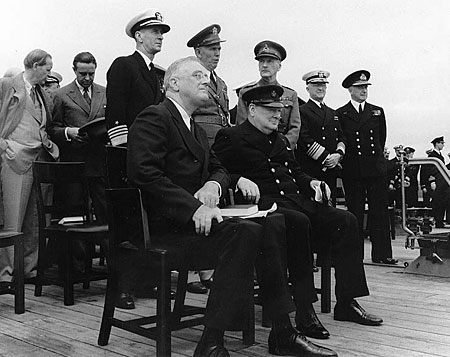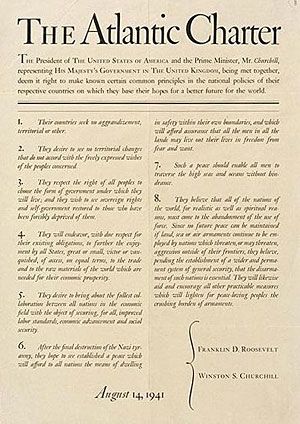Preparing for War
In August 1941, British Prime Minister Winston Churchill and President Franklin Roosevelt met secretly off the coast of Newfoundland to discuss their involvement in the war. The two countries agreed to commit military forces and fight together against the Axis powers.

Map and location of Newfoundland.
Their discussion that day led to the Atlantic Charter, which was basically an outline of the two nations’ objectives for the war. The Atlantic Charter was also considered significant because it would later serve as a foundation for the United Nations.

Prime Minister Winston Churchill and President Franklin Roosevelt.
As political leaders prepared for war, so did thousands of young men throughout the United States. Many would be drafted, while others felt a sense of obligation to serve their country after the events at Pearl Harbor. Regardless of their reason, some 15 million “GIs” would go on to serve during World War II.

The Atlantic Charter.
The slang term GI was shorthand for “Government Issue” which was stamped on all equipment and supplies provided to those who served in the U.S. Armed Forces. It is used to refer to any soldier or group of soldiers serving in the army.